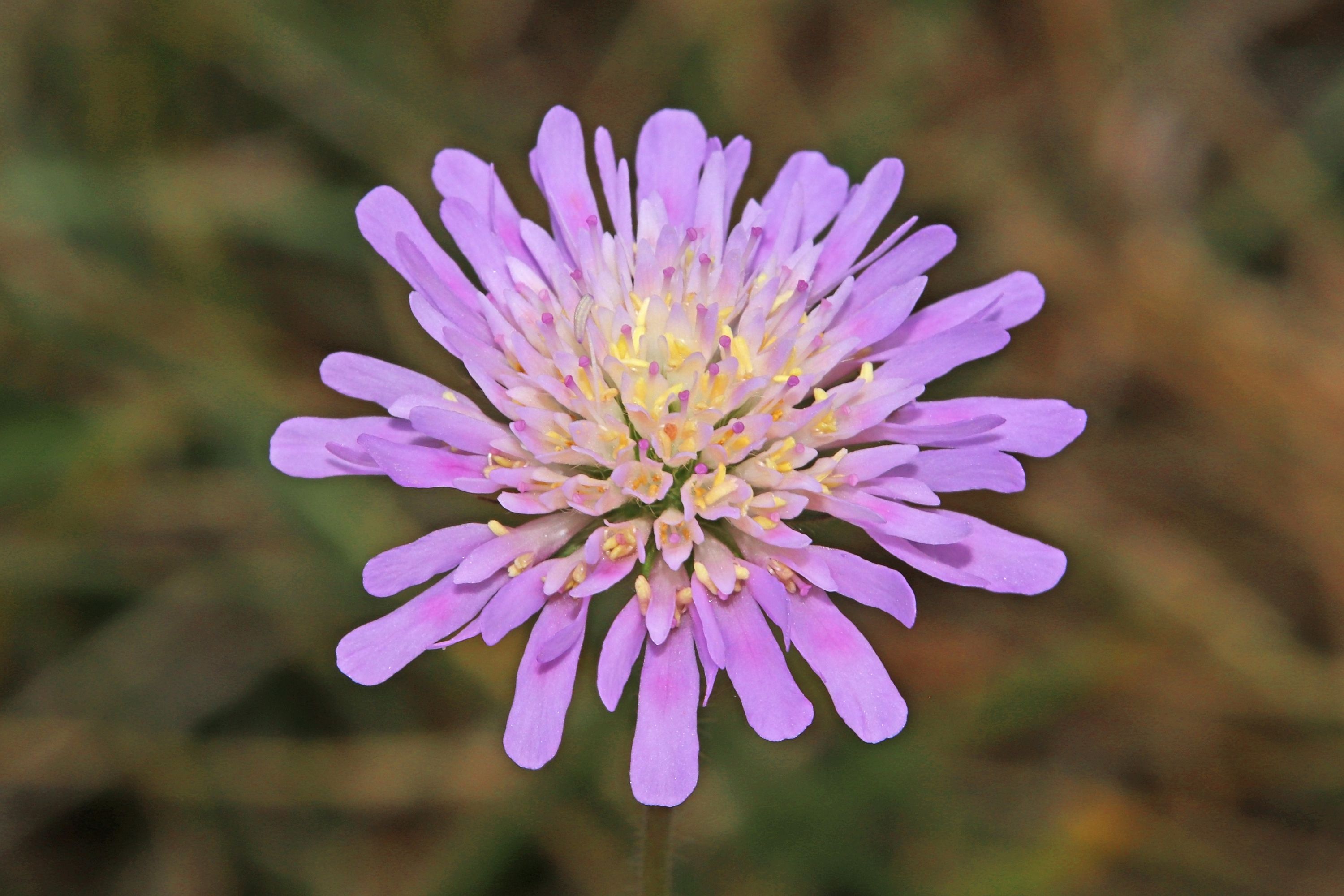Small scabious
(Knautia arvensis)

Description
Knautia arvensis, commonly known as field scabious or small scabious, is a perennial flowering plant belonging to the family Dipsacaceae. The plant is native to Europe and Asia, and it is widely distributed throughout the temperate regions of the world. Knautia arvensis is a popular ornamental plant and is grown for its attractive blooms and foliage. The plant also has medicinal properties and has been used for centuries to treat a variety of ailments. In this article, we will provide a comprehensive overview of Knautia arvensis, including its taxonomy, description, habitat, uses, and cultivation. Taxonomy: Knautia arvensis was first described by the Swedish botanist Carl Linnaeus in 1753. The genus Knautia is named after the German botanist Christian Knaut, and the species name arvensis means "of the field" in Latin, referring to its natural habitat. Knautia arvensis belongs to the family Dipsacaceae, which includes other popular ornamental plants such as scabious, teasel, and valerian. The plant is classified as a dicotyledonous flowering plant, meaning it has two seed leaves, and it belongs to the order Dipsacales. Description: Knautia arvensis is a herbaceous perennial plant that can grow up to 80 cm tall. The plant has a fibrous root system and produces several stems that are erect, branched, and hairy. The leaves of Knautia arvensis are basal and alternate, with the basal leaves being larger than the upper leaves. The leaves are deeply lobed and toothed, and they have a rough texture due to their hairy surface. The flowers of Knautia arvensis are produced in a terminal inflorescence, which is a cluster of flowers at the end of the stem. The flowers are typically blue-purple, although they can also be pink or white, and they have a distinctive pincushion-like shape. The flowers bloom from June to September and attract a variety of pollinators, including bees, butterflies, and moths. The fruits of Knautia arvensis are small, dry achenes that are dispersed by wind. Habitat: Knautia arvensis is native to Europe and Asia, and it is widely distributed throughout the temperate regions of the world. The plant grows in a variety of habitats, including meadows, pastures, woodland edges, hedgerows, and roadsides. Knautia arvensis prefers well-drained soils and full sun or partial shade. The plant is tolerant of a wide range of soil types and pH levels, although it prefers neutral to slightly acidic soils. Knautia arvensis is a hardy plant and can withstand frost and drought conditions. Uses: Knautia arvensis has several uses, including ornamental, medicinal, and ecological. The plant is grown as an ornamental plant for its attractive blooms and foliage. It is suitable for cottage gardens, wildflower meadows, and naturalistic planting schemes. Knautia arvensis is also a valuable plant for wildlife gardening, as it attracts a variety of pollinators and other beneficial insects, including ladybirds and lacewings. Knautia arvensis has medicinal properties and has been used for centuries to treat a variety of ailments. The plant contains several bioactive compounds, including flavonoids, tannins, and saponins, which have anti-inflammatory, antiseptic, and astringent properties. Knautia arvensis has been used to treat wounds, bruises, and skin conditions such as eczema and acne.
Taxonomic tree:







